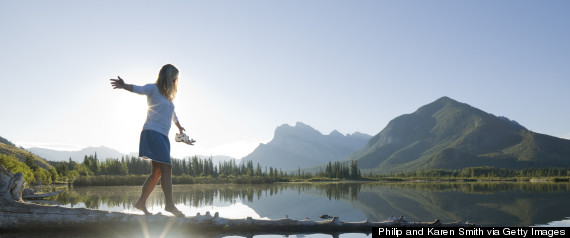
Everyone deserves access to the outdoors. Unfortunately, many of our communities do not have nearby nature or safe places to explore and enjoy the natural world close to where we live, learn, work, worship and play. Only one in five kids can safely walk to a park or a playground, and access is even less available in low-income communities. Individuals and communities with inadequate opportunities to experience nature are missing out on a whole host of benefits.
That is why Sierra Club recently launched a Nearby Nature initiative, protecting and establishing parks and green spaces in urban and suburban communities to ensure access to nature is increasingly equitable. There are many reasons we all need nearby nature. Here are 14 for 2014:
- Nearby nature provides fitness and recreational opportunities. Urban parks are great places for communities to get some exercise - and they are far cheaper than gym memberships. People who visit urban parks frequently have better health outcomes than those who do not;
- Nearby nature reduces obesity. Children who live in greener more vegetated neighborhoods have lower body mass indices than children lacking nearby nature. Increasing access to parks and green space is a factor in reducing childhood obesity;
- Nearby nature can help alleviate attention deficit disorders. ADD/ADHD may affect more than 2 million children in America. Studies have shown that the symptoms of ADD are reduced in children who participate in outdoor activities in green natural settings;
- Nearby nature can improve vision. Kids who are able to spend more time playing outdoors are less likely to develop myopia, or nearsightedness, then kids who play indoors;
- Nearby nature can help us breathe. Kids living in areas with more street trees have been found to have a significantly lower prevalence of asthma;
- Nearby nature makes us happy. Living in urban areas with a lot of green space has been shown to improve residents' feelings of overall happiness and wellbeing;
- Nearby nature improves community. Community spaces that contain trees and vegetation have been found to encourage greater social activity than community spaces lacking natural features;
- Nearby nature can reduce crime. Increased levels of vegetation surrounding urban apartment buildings have been linked to reductions in crime in and around those buildings, both property crimes and violent crimes;
- Nearby nature can improve overall academic performance. The availability of natural areas to high school students have been associated with higher standardized test scores, graduation rates, and numbers of students planning to attend college;
- Nearby nature-based learning opportunities improve science scores. Among elementary school children, school gardening and outdoor learning initiatives are associated with improvements in science;
- Nearby nature can reduce air pollution and store carbon. The National Recreation and Park Association estimates the air pollution and carbon storage benefits of trees in urban parks to be valued at $500 million and $1.6 billion, respectively;
- Nearby nature can reduce energy consumption and save us money. Shade trees and vegetation reduce temperatures inside buildings and cars by 20-45 degrees Fahrenheit, significantly curtailing the need for cooling systems. Energy savings from cooling range from 7 to 47 percent;
- Nearby nature can make our cities more resilient to climate disruption. Urban forests make cities more resilient to severe storm events, which are expected to increase; and
- Nearby nature is the first step down a lifelong path of exploring, enjoying and protecting Our Wild America.
